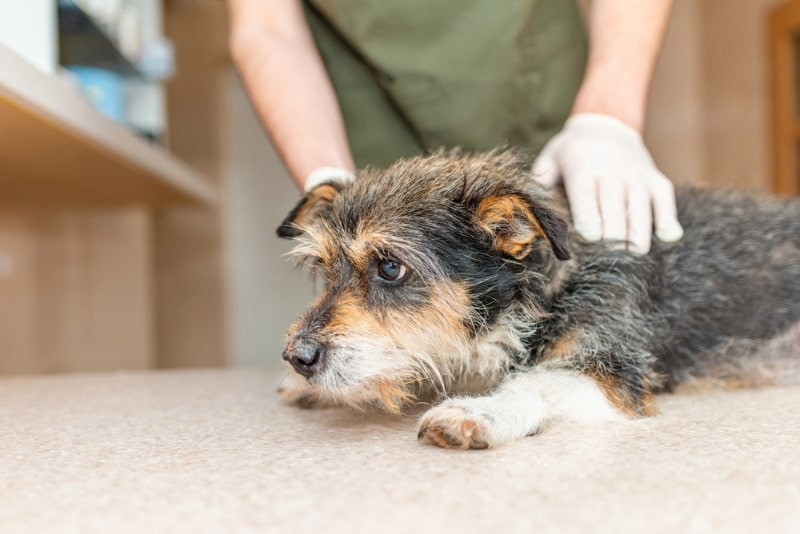
Zoonotic Disease Watch: What Vets Need to Know This Fall
Share
As October ushers in cooler temperatures and seasonal transitions, it also brings heightened awareness of zoonotic diseases — infections that can jump between animals and humans. With global warming altering vector patterns, and human-wildlife interaction on the rise, fall is no longer just about fleas and ticks. It's become a critical season for disease surveillance in veterinary practices.
In 2025, staying ahead of zoonotic threats isn’t just good medicine — it’s part of your clinic’s public health responsibility. Here’s what veterinary professionals need to know heading into the final quarter of the year.
Emerging & Resurging Zoonotic Threats in 2025
Veterinarians are seeing a resurgence of certain zoonoses and the emergence of new viral strains that warrant close attention this fall:
Leptospirosis
Trend: Spiking in both urban and rural regions due to increased rainfall and rodent population shifts.
Concern: Rising cases in dogs, with documented human exposures linked to pet contact or contaminated water sources.
Tip: Encourage annual vaccination in high-risk areas and include leptospira PCR or serology in fall wellness labs.
Brucellosis
Trend: Emerging clusters in livestock-heavy regions and illegal pet breeding operations.
Concern: Brucella canis poses a threat to breeding dogs and handlers; zoonotic transmission risks are underreported.
Tip: Implement strict intake protocols for breeding dogs and recommend testing for dogs with reproductive symptoms.
Novel Influenza Strains
Trend: Avian influenza and swine flu variants continue to evolve, with increasing cross-species transmission risk.
Concern: Companion animals may serve as incidental hosts; CDC has flagged H5N1 as a high-concern strain this season.
Tip: Monitor for respiratory signs in shelter or multi-pet households; advise biosecurity for clients who work with poultry or pigs.
CDC & WHO Updates That Matter for Your Practice
CDC 2025 Veterinary Guidance Highlights
-
Updated “Compendium of Veterinary Standard Precautions” now includes additional PPE guidelines for high-risk zoonoses.
- Enhanced reporting protocols for veterinarians encountering Brucella canis, H5N1, or novel vector-borne cases.
WHO Zoonotic Disease Surveillance Bulletin
-
Emphasizes the importance of One Health strategies — encouraging collaboration between veterinary, medical, and environmental sectors.
-
Includes climate-related data on changing vector habitats and how they affect disease migration patterns (e.g., Lyme disease expansion zones).
Pro Tip for Clinics: Download the latest CDC One Health Toolkit and display a printed version of the updated Standard Precautions poster in staff-only areas.
Diagnostic Technology is Getting Smarter
Modern veterinary diagnostics are evolving to meet the challenge of zoonotic threats — and labs are innovating fast.
Multiplex PCR Panels
-
Rapidly test for multiple zoonotic pathogens in one sample (e.g., leptospira, ehrlichia, babesia).
- Useful for shelters, high-volume clinics, or outbreak situations.
Point-of-Care Zoonotic Tests
-
More in-house tests now detect diseases like Giardia, leptospirosis, or even Brucella (in reference settings).
- Some AI-driven platforms are flagging zoonotic risks based on case history input and regional alerts.
Genomic Surveillance
Larger diagnostic networks (e.g., IDEXX, Antech) are leveraging sequencing data to monitor mutation trends in pathogens like influenza and parvovirus strains with zoonotic potential.
Consider building zoonotic panels into fall wellness campaigns, especially for dogs with outdoor exposure, travel history, or signs of immune suppression.
Staff Education & Client Communication Tips
Train Your Team
Reinforce PPE use and biosecurity when handling suspected zoonotic cases or bodily fluids.
Educate Your Clients
-
Provide take-home handouts or email newsletters explaining why fall is a critical season for zoonotic screening.
-
Use visual aids in exam rooms to illustrate what “zoonotic” really means — especially for new pet owners.
Reassure clients: most zoonoses are preventable with vaccination, hygiene, and early detection.
